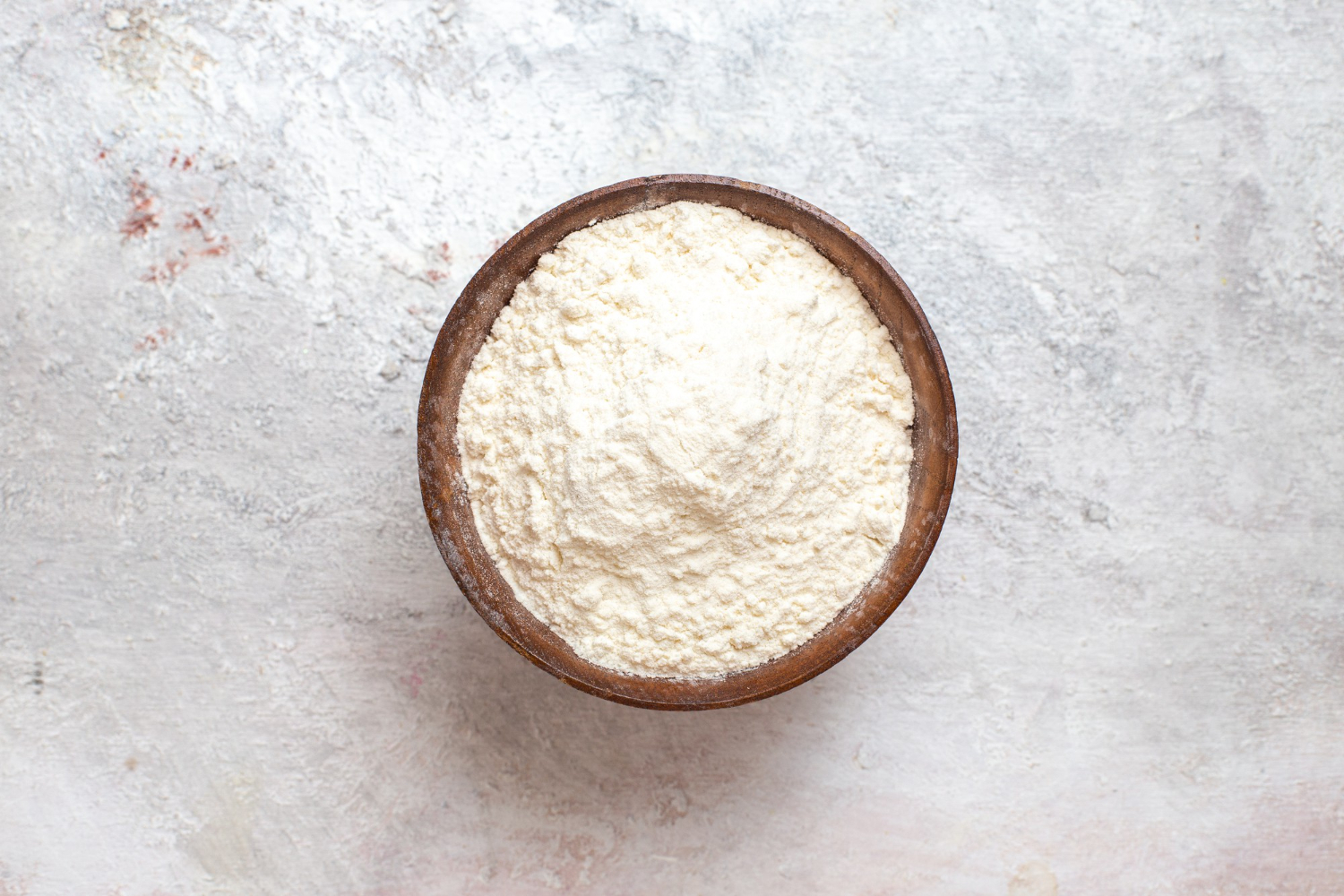Baking is considered the most scientific form of cooking. Improper measurements, utensils, and temperature control will ultimately damage your baked good. A mixture with minimal baking flour, and you will have a watery batter. Too much baking powder and leavening agents will raise your baked product too much.
Knowing how to use your ingredients will decrease producing mistakes on your side. While some products deceivingly look similar, they cannot be interchanged all of a sudden. Swapping your ingredients with something else will affect the flavor, texture, and aroma of your pastry.
Some thought that baking flour is a “form of baking powder in the case of powdered ingredients.” Indeed, flour is available in powdered form—and it is a common material in baking. However, you cannot interchange these two materials. Baking powder is a leavening agent, while baking flour is a primary ingredient for baking.
Are Baking Powder and Baking Flour Different Things?
To give a clearer insight into how leavening agents and primary ingredients differ, you need to identify the chemistry behind several food products. Leavening agents are available in powder form for them to be mixed homogeneously into your baking mixture. It is also incorporated in small quantities since it can effectively raise a cup of flour in just a teaspoon’s worth.
What is a baking powder?
Baking powder is a variant of leavening agent, an essential ingredient for your baking needs. Baking powder works better than acid-based and alkaline-based leavening agents—since it already combined these two properties. Therefore, it is recommended to use baking powder when you don’t have an acidic and alkalic ingredient mixed into your batter.
Acid and base are two compounds found in different chemical products. Acids like cream of tartar are known for its sour taste and scent, and it is used to break down protein binds. Breaking proteins will introduce air pockets to your food—that will help your dough to rise efficiently.
Base substance or alkalic substances is the polarizing side of acids. It has a bitter, astringent taste. This leavening agent works perfectly when you are making citrus-based pastries or if you are mixing any acidic product on your batter. Alkalic substances like baking soda are mixed with acids to inhibit the release of carbon dioxide.
What is baking flour?
While the baking powder is a leavening agent, baking flours are considered a primary ingredient that supplies protein. Flour is produced by grinding dry grains, nuts, seeds, beans into a powder. The protein source creates a variety for your baking flour. An increased amount of protein is an indicator of more gluten content. In addition, this substance provides bite and volume to your baked product.
Technically, all-purpose flour is considered baking flour. It has a regulated amount of protein and can be used for different cooking needs like coating, cake batter, bread, sauces, and dips. Baking flour differs from baking powder in many ways. For example, baking powder is a leavening agent, while baking flour is a primary protein source.
Aside from all-purpose flour, several flours that can be used for baking are as follows:
- Cake Flour
- Pastry Flour
- Bread Flour
- Self-Rising Flour
- Whole Wheat Flour
- White Whole Wheat Flour
- Gluten-Free Flour
- Almond Flour
- 00 Flour (Italian-style Flour)
Is Baking Powder the Same Thing as Baking Flour?
While baking powder and baking flour are essential baking materials, you cannot use them separately. Replacing your ingredients with just entirely baking powder or baking flour will significantly catastrophe your kitchen. Leavening agents must only be worked on in small quantities since they have an immense amount of acid/base.
For air pockets to produce, leavening agents must react through protein-based ingredients such as baking flour. Protein in the form of starch or flour provides the necessary sugars to complete the fermentation process.
As soon as the acid reacts to the base, it will start to produce bubbles. The protein provided by baking flour or starch will trap such gases. This will, later on, create air pockets—an indicator that your ingredients have doubled up in proportion. Air pockets are responsible for locking the baked goods’ moisture content.
Here are some reminders in the proper usage for your baking powder and baking flour:
- In baking’s rule of thumb, it is suggested to place a teaspoon worth of baking powder for every cup of all-purpose flour. However, other flour variants may or may not require baking powder.
- In the case of self-rising flour, salt and leavening agents are already incorporated within the mixture. Therefore, while bakers commonly use self-rising flour, beginners are recommended to use this flour variant.
- If you don’t have a baking powder in hand, you can make your mixture using baking soda, cream of tartar, and cornstarch. Mix two parts of cream of tartar, one part of baking soda, and sift it with one part of cornstarch. The ratio of flour-baking powder must still follow.
Can I Use Flour Instead of Baking Powder?
You cannot substitute any flour with baking powder and vice-versa. This is because these two components in baking functions are vastly different, and missing a single piece will drastically affect your baking moment.
Leavening agents like baking powder might be used in small quantities. Still, they are highly essential to keep your bread fluffy. A mixture without baking powder will produce a flat dough, similar to a tortilla wrap.
Protein-containing powders like baking flour provide starch that acts as your leavening agent’s “food” during the fermentation process. Starch releases sugars that are consumed by leavening agents (most especially yeasts). Therefore, as soon as baking powder reacts with other ingredients, it will start consuming sugar.
In the case of single-acting baking powder, the leavening agent will already convert the sugars into air bubbles. As a result, the chemical reaction releases carbon dioxide gases, which creates the scent only familiar during the baking process. Double-acting baking powder restrains this for a while, and it will be released during the cooking process.

